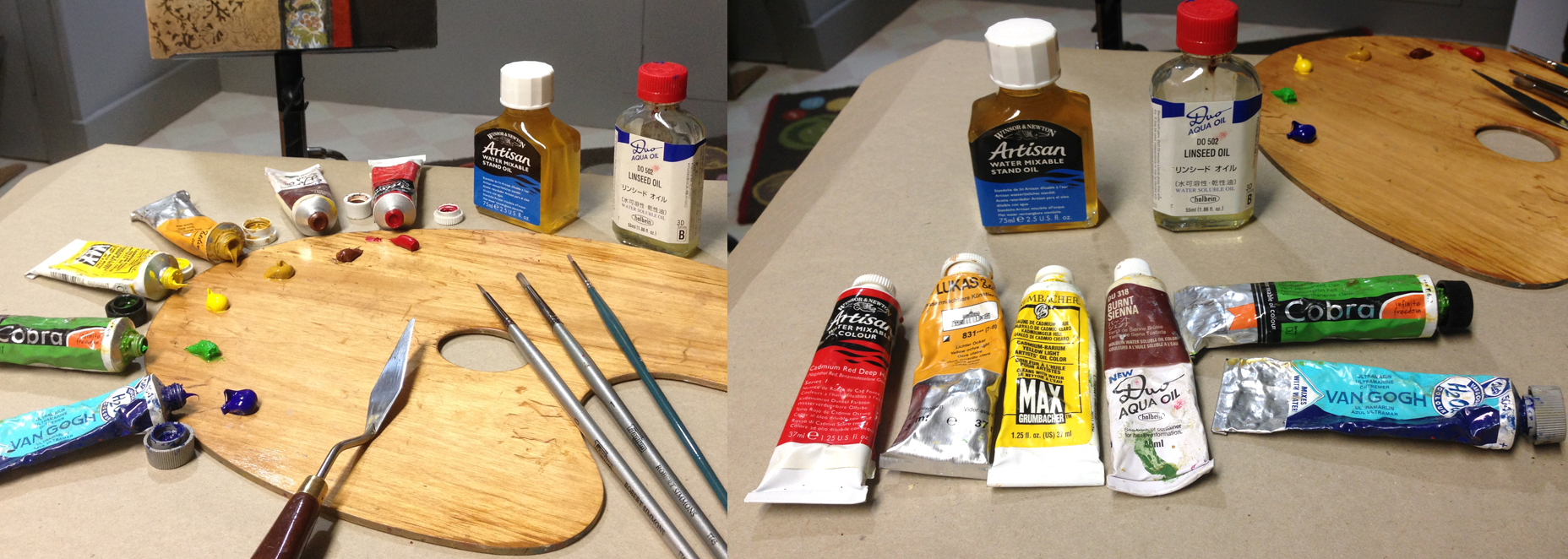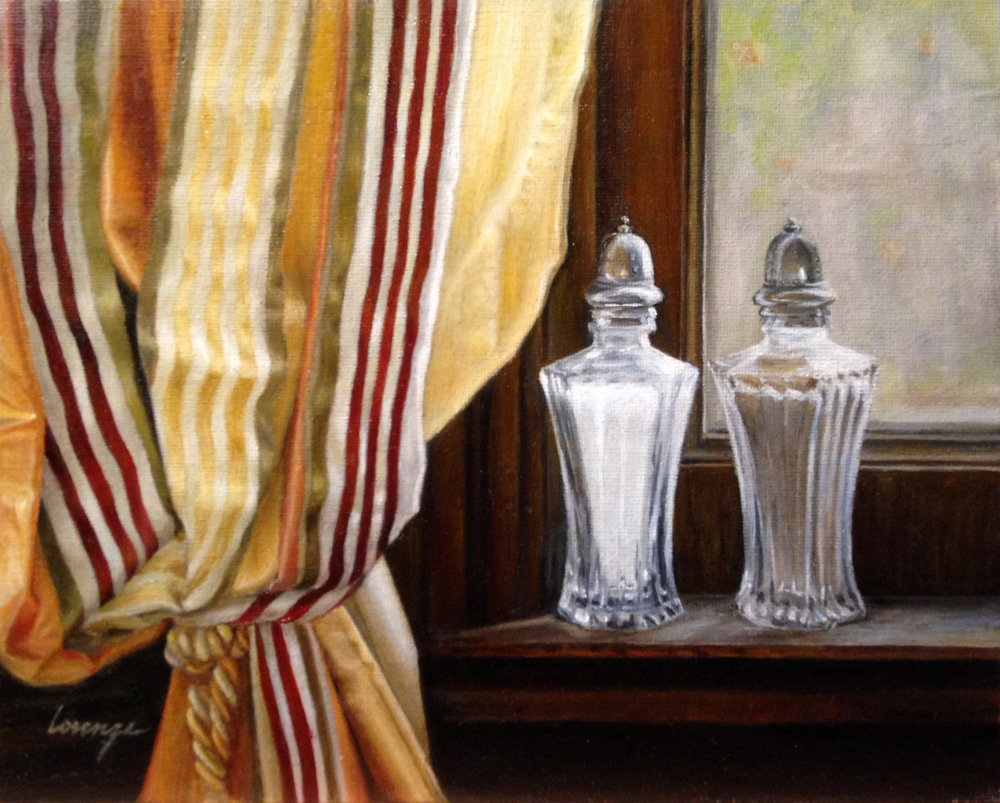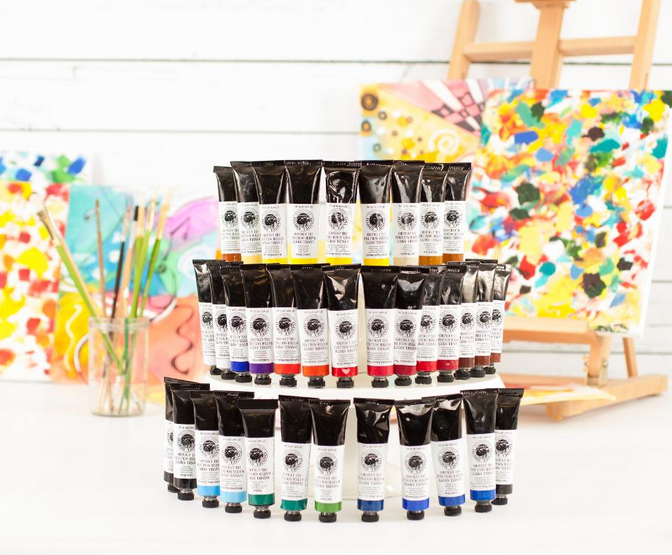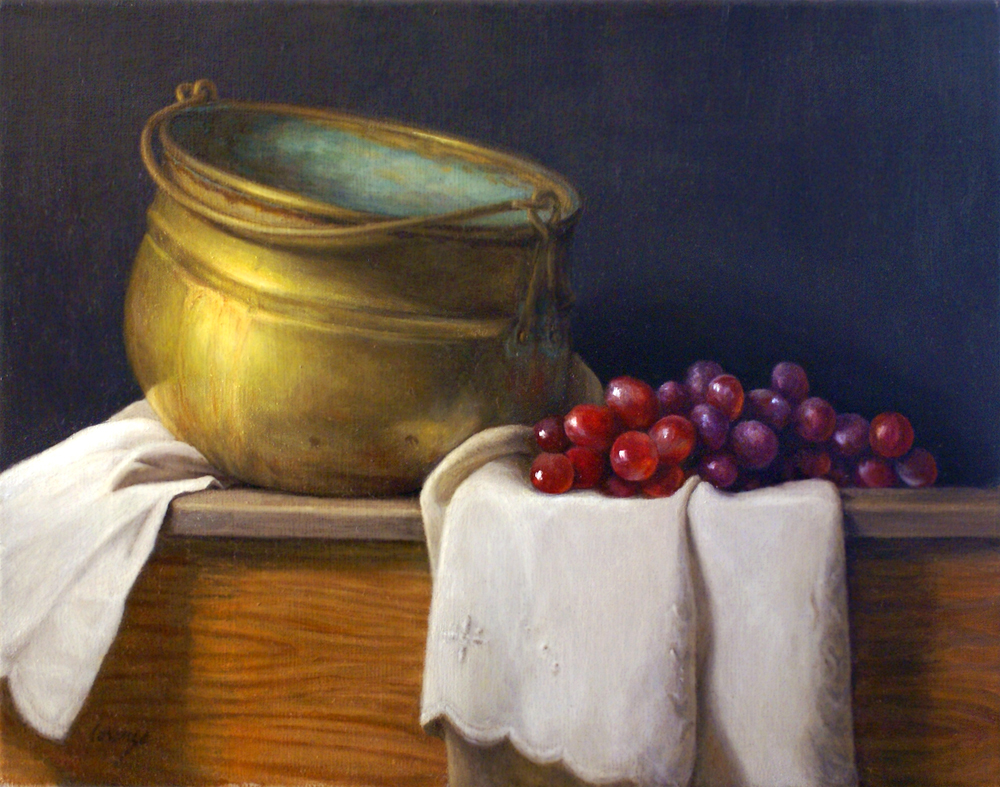How To Paint With Water Soluble Oil Paints
Learn How to Go Started With Oil Painting Using Water-Soluble Paints
Artists have condolement zones in terms of creativity, and mine has always been drawing with paper and pencil. In black and white. They are unproblematic and recyclable. At the same fourth dimension, oil paintings rendering texture and luminosity with rich color amaze and inspire me. But, mixing color, adding mediums and dealing with solvents loomed like a daunting, and environmentally unfriendly, science project. (Hazmat grooming, anyone?)
For me, water-soluble oil paints removed that concern nigh chemicals and felt achievable.

I knew of no ane who had used them and was hesitant to invest in more paints in case the result was uninspiring. Just these new oils turned out to be the perfect introduction to oil painting. Water-soluble oil paint lines accept been formulated past many of the well-nigh respected makers of traditional oils including: Grumbacher Max, Winsor & Newton, Lukas Berlin, Van Gogh, Holbein Duo and Royal Talens Cobra. As with traditional oils, artists volition have personal preferences.
What are water-soluble oil paints?
Likewise known equally "water-miscible" or "solvent-free" oils, these are real oil paints, formulated with the verbal same pigments as traditional oils. They are not water-based, the oil itself is modified making information technology possible to clean upwardly with soap and water. Really. No turpentine or other solvents are needed.
Do they perform the same?
In a word, YES. Water-soluble oils can be used on the aforementioned supports: stretched canvas or linen, hardboard, wood, etc. They offering the same consistency and finish equally oils. In that location is no deviation in gloss or texture equally there can be for acrylic paints or gouache, since these literally are oil paints.

The Happy Couple past Dorothy Lorenze
For those who are used to water-based paints, it's tempting to treat these paints as watercolors, only they are not. They're oils. They just clean upward easier. Liquid Dawn or a bones bar soap volition make clean brushes. That's it. Oil paints dry by oxidation rather than evaporation then these paints will remain flexible and workable for well-nigh 48 hours. When thoroughly dry, they are as permanent as whatever other dry oil paint.
Do's and don'ts of water-soluble oil paints
- Practise clean brushes with water and soap (basic bar lather, liquid or solvent-free brush cleaners)
- DON'T exit brushes soaking in h2o — Information technology's just bad for brushes under whatever circumstances.
- Practice use a medium to sparse paint if you similar. At that place are mediums specific to water-soluble oils merely linseed and walnut oil work simply fine.
- DON'T thin oil paints with water for transparency. Paint thinned with h2o will become cloudy. Think of water equally ONLY for clean-up.
- Exercise use a forest or glass palette. After painting sessions, wipe mixed paint off your palette, elevator and store squeezed out pigment in an airtight container. Pigment tin be left on the palette if information technology'due south stored in an airtight palette box.
- DON'T use a paper palette equally information technology will tend to pull moisture from the paint.
- DO expect paint to dry slightly faster than traditional oils. Only slightly.
- DON'T have to wait for pigment to dry out. Like traditional oils, y'all can alloy pigment moisture-into-wet.
- Practice recognize that, as with traditional oils, there are differences between drying time for some colors (cadmiums dry slower) and differences in consistency betwixt brands. Find your favorites!
After working in mainly graphite for and then long, I was totally overwhelmed by the array of colors available and bought well-nigh everything offered. No demand to practise that! I paint with my favorites generally.

Daniel Smith H2o Soluble Oils
This is a typical list of colors to consider:
- Ivory black
- Ultramarine blue
- Raw umber
- Burnt umber
- Burnt sienna
- Alizarin crimson
- Cadmium red
- Sap dark-green
- Permanent green calorie-free
- Yellow ochre
- Cadmium yellowish
- Naples yellowish
- Titanium white
Are in that location whatever negatives to using water soluble oils?
Every bit with whatever new technique or materials, it takes time and practise to gain a level of familiarity, condolement and consistency. With oils, often wet paint is blended on the canvas for soft edges. Within the balance of wet and dry, at that place can be a slightly tacky stage where it's harder to add new pigment. Using a bit of medium helps. This also happens with traditional oils, but perchance slightly sooner with the new oils.
One other "negative" is worth mentioning because information technology should be quashed. Some established artists and teachers relegate these new oils to "beginner" quality, which is not accurate. Possibly that's because the paints are relatively new and those artists have never used them. Recently a successful blogger, workshop teacher and daily painter said she was surprised that my work was executed with water-soluble oils, saying my paintings were "so professional person." I'll take that as a compliment! And proof that putting in the time to learn your craft and main new material makes all the difference.

Munchkin Spoonful by Dorothy Lorenze
This painting, Almost Wine, was awarded Honorable Mention in an online contest using Lukas brand h2o-soluble paints. Professional results are possible.

What'southward holding you lot dorsum from trying oil paints? With water-soluble oils, it IS easy being green!
Online Oil Painting Class

<!–
Become the guidance you need to create an oil painting with photo-like realism!Enroll Now »
How To Paint With Water Soluble Oil Paints,
Source: https://www.craftsy.com/post/water-soluble-oil-paints/
Posted by: mcsherrydits1975.blogspot.com


0 Response to "How To Paint With Water Soluble Oil Paints"
Post a Comment